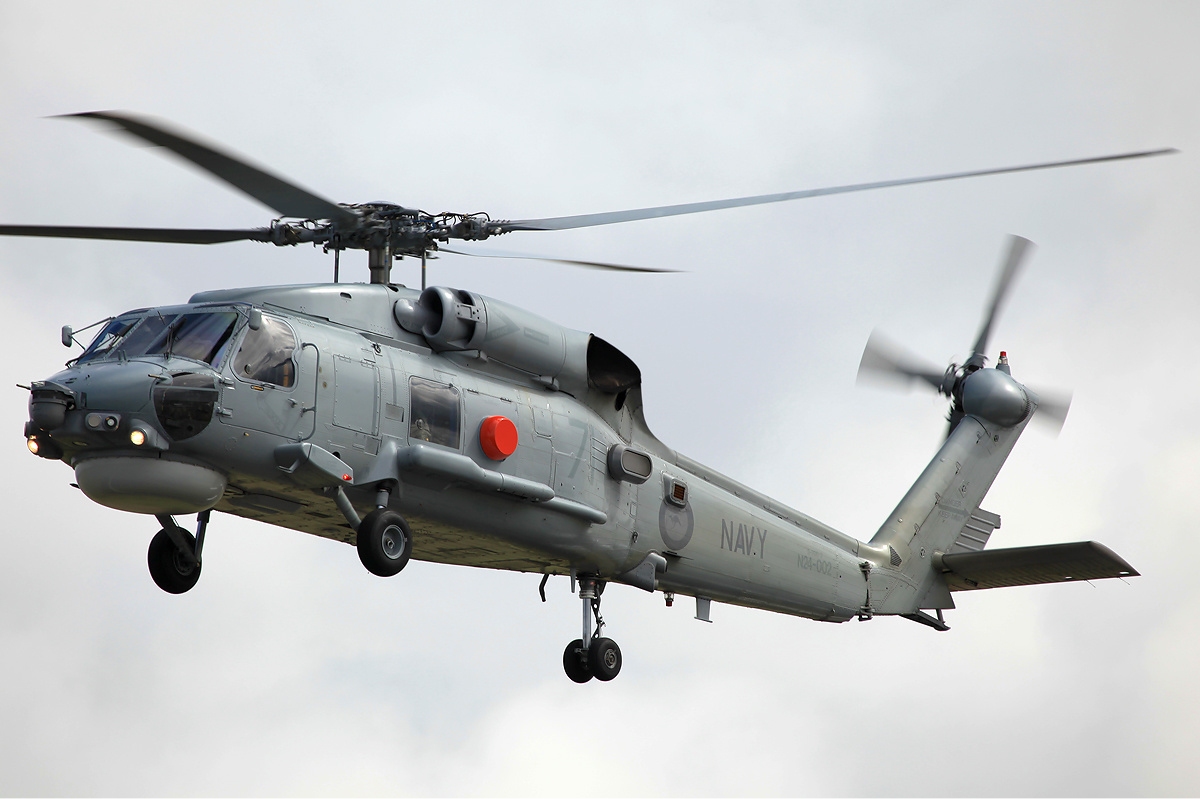816 Squadron RAN on:
[Wikipedia]
[Google]
[Amazon]
816 Squadron is a Royal Australian Navy Fleet Air Arm squadron that started out as a Royal Navy unit,

 816 Squadron was first formed as a
816 Squadron was first formed as a
816 Squadron Official Website
816 Squadron History
{{DEFAULTSORT:816 Squadron Ran Flying squadrons of the Royal Australian Navy Military units and formations established in 1948
816 Naval Air Squadron
816 Naval Air Squadron was a Royal Navy Fleet Air Arm carrier based squadron formed at the start of the Second World War.
The squadron formed aboard in October 1939 with 9 Fairey Swordfish torpedo bombers for anti-submarine duty on convoys b ...
.
Current roles
816 is currently active as a helicopter squadron equipped withMH-60R
The Sikorsky SH-60/MH-60 Seahawk (or Sea Hawk) is a twin turboshaft engine, multi-mission United States Navy helicopter based on the United States Army UH-60 Black Hawk and a member of the Sikorsky S-70 family. The most significant modificat ...
helicopters. The Squadron is based at HMAS ''Albatross'' (NAS Nowra) and primarily operates from the Navy's ''Adelaide'' and ''Anzac'' class frigates. 816 Squadron provides the fleet with anti-submarine and anti-surface surveillance capabilities.
History

 816 Squadron was first formed as a
816 Squadron was first formed as a Royal Navy
The Royal Navy (RN) is the United Kingdom's naval warfare force. Although warships were used by English and Scottish kings from the early medieval period, the first major maritime engagements were fought in the Hundred Years' War against Fr ...
Fleet Air Arm
The Fleet Air Arm (FAA) is one of the five fighting arms of the Royal Navy and is responsible for the delivery of naval air power both from land and at sea. The Fleet Air Arm operates the F-35 Lightning II for maritime strike, the AW159 Wi ...
carrier based squadron in 1939 embarked in .
In 1948 816 Squadron was re-formed as a Royal Australian Navy FAA squadron operating Fairey Firefly
The Fairey Firefly is a Second World War-era carrier-borne fighter aircraft and anti-submarine aircraft that was principally operated by the Fleet Air Arm (FAA). It was developed and built by the British aircraft manufacturer Fairey Avia ...
aircraft. The Squadron formed part of the 20th Carrier Air Group embarked on HMAS ''Sydney''. In 1952, 816 Squadron participated in the Montebello Islands
The Montebello Islands, also rendered as the Monte Bello Islands, are an archipelago of around 174 small islands (about 92 of which are named) lying north of Barrow Island and off the Pilbara coast of north-western Australia. The islands ...
atomic weapons tests and in 1953 saw service in the Korean War
{{Infobox military conflict
, conflict = Korean War
, partof = the Cold War and the Korean conflict
, image = Korean War Montage 2.png
, image_size = 300px
, caption = Clockwise from top:{ ...
.
Over the following 40 years, 816 squadron was disbanded and re-formed several times as newer aircraft were introduced.
In 1956 with the arrival of HMAS ''Melbourne'', 816 Squadron embarked as part of the 21st Carrier Air Group equipped with Gannet and Sea Venom aircraft. In 1967 the RAN acquired newer aircraft and ''Melbourne'' was extensively upgraded to handle the faster and heavier aircraft. 816 Squadron was re-equipped with Grumman S-2E Trackers.
On 5 December 1976, a fire was deliberately lit by a Fleet Air Arm member near the aircraft hangars at HMAS ''Albatross''. The fire destroyed or seriously damaged twelve of the thirteen S-2 Trackers in the RAN's possession. Subsequently, 15 second-hand S2-G Trackers were purchased from the US Government and all remaining serviceable or repairable S2-E Trackers were upgraded to the S-2G standard. 816 Squadron continued to operate S-2Gs until the decommissioning of HMAS ''Melbourne'' in 1982, when the Squadron was again disbanded.
From 1984 until 1987, 816 Squadron operated Westland Wessex helicopters in the Army support role.
816 Squadron was re-formed in 1992 to operate Sikorsky Seahawk helicopters. The squadron has embarked helicopters on RAN ''Adelaide'' class and ''Anzac'' class frigates and has participated in operations including in the Persian Gulf.
The squadron will continue to operate the Seahawk after the retirement of the S-70B-2 model. On 13 December 2012 it was announced that 816 Squadron will transition to the new MH-60R Seahawk
The Sikorsky SH-60/MH-60 Seahawk (or Sea Hawk) is a twin turboshaft engine, multi-mission United States Navy helicopter based on the United States Army UH-60 Black Hawk and a member of the Sikorsky S-70 family. The most significant modificat ...
, with 725 Squadron being reformed to be the training squadron.
Aircraft
Current RAN service
* Sikorsky MH-60R Romeo (Anti Submarine Warfare, Anti Shipping, Surveillance & Targeting)Previous RAN service
*Fairey Firefly FR.4, FR.5 & FR.6 (Attack Reconnaissance) * Fairey Gannet AS.1 & T.2 (Anti Submarine Warfare) * de Havilland Sea Venom FAW.53 * Grumman S-2E & S2-G Tracker (Anti Submarine Warfare) * Westland Wessex HAS 31B (Army Support) *Sikorsky S-70B-2 Seahawk
The Sikorsky SH-60/MH-60 Seahawk (or Sea Hawk) is a twin turboshaft engine, multi-mission United States Navy helicopter based on the United States Army UH-60 Black Hawk and a member of the Sikorsky S-70 family. The most significant modificatio ...
(Anti Submarine Warfare, Anti Shipping, Surveillance & Targeting)
RN service
* Fairey Swordfish I (Anti submarine Warfare, Search) *Fairey Swordfish II (Strike) *Supermarine Seafire
The Supermarine Seafire is a naval version of the Supermarine Spitfire adapted for operation from aircraft carriers. It was analogous in concept to the Hawker Sea Hurricane, a navalised version of the Spitfire's stablemate, the Hawker Hurr ...
Ib & L.IIc (Strike)
* Grumman Wildcat V (Strike)
* Fairey Barracuda II (Torpedo Bomber)
* Fairey Firefly FR.I (Fighter Reconnaissance)
*Fairey Firefly NF.I (Night Fighter)
References
Sources
816 Squadron Official Website
816 Squadron History
{{DEFAULTSORT:816 Squadron Ran Flying squadrons of the Royal Australian Navy Military units and formations established in 1948